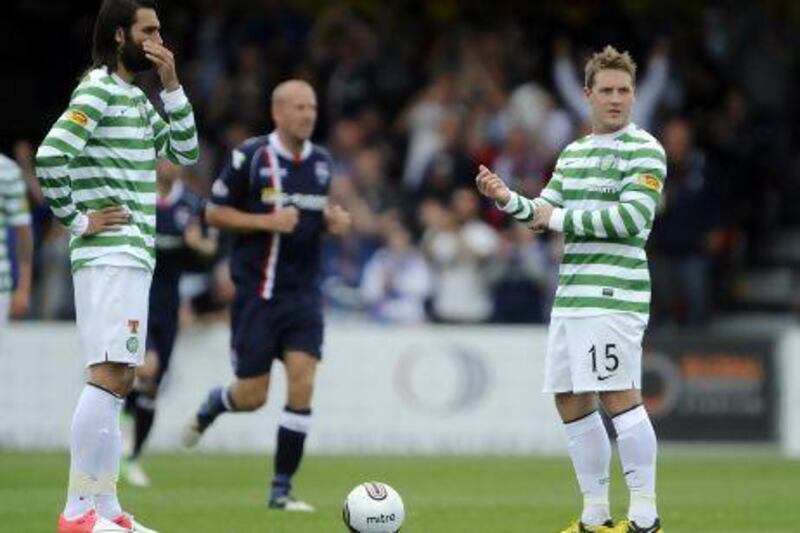So, Rangers are gone. Long live the king.
Celtic canter to title in record time - perhaps even by the year's end - now that their only rivals, Glasgow neighbours Rangers, have bitten the dust.
Right?
Wrong.
The blue side of Glasgow may have been relegated to the Third Division thanks to the money men and some questionable financial behaviour of their own, but Celtic's presumed easy time at the top has been anything but.
The last time the Glasgow giants were separated in the top two of the league was in 1994/95, when Rangers scraped home by 15 points from Motherwell and Celtic were in turmoil.
The tables have turned and now three divisions separate them.
The one remaining dominant team in the Scottish game were expected to enjoy years of easy drubbings against the lesser sides who, since the early 1990s, have had neither the financial clout nor fan base to compete with them.
The goal-difference for the Old Firm in every game in the 14 years of the SPL is plus 1,526. The combined goal difference for every other team to have played in the SPL: minus 1,608.
However, as we reach the second weekend of December, Celtic head the table by a solitary point, and only five separate the top half of the 12-team league.
With midweek exertions seemingly taking their toll - Celtic's heroics to defeat Barcelona included - the Hoops have already lost to St Johnstone, Inverness and Kilmarnock, and have drawn four.
A draw, thanks to an own-goal, against Second Division Arbroath in the Scottish Cup, is recent evidence that this is not a team dominating the country's favourite sport. It suggests there is all to play for if you happen to be minnows. And they all can realistically fancy their chances. Behind Celtic in the league are Hibernian, beaten 5-1 by Hearts in the Scottish Cup final last year, but they saw off their Edinburgh neighbours 1-0 in the fourth round of the same competition this campaign to illustrate their improvement.
Inverness have been the surprise package this year, under the former England captain Terry Butcher, with resounding victories over Dundee United, Ross County and Dundee this season taking them to an all-time high of second spot only two weeks ago.
Alongside Motherwell one point further back are Aberdeen, who for years, if not decades, have flattered to deceive, but this term are mounting a serious challenge, thanks in no small part to a new-found appetite for goals. Niall McGinn is scoring for fun up front, and a few wins on the trot could see any of the top six (St Johnstone complete the half-dozen) open a gap and put pressure on Celtic, who will be fighting on three fronts, including the Champions League and, if they can overcome Arbroath, the Scottish Cup.
If we consider the fact that, not so long ago, Scottish football was criticised for being a boring race between the superpowers and everyone else, way before the other European leagues followed suit, this might get fans back to watching matches at the grounds rather than on TV.
Who knows? Perhaps an Inverness v Hibernian result come April might prove pivotal, just as all those Old Firm matches have proved in the past.
It might not be the way it was hoped or planned, but these are intriguing times in Scottish football.
msmith@thenational.ae
Follow us
[ @SprtNationalUAE ]





